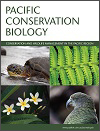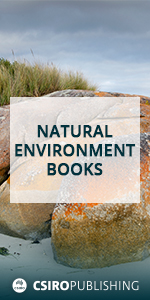PC25048Confirmation of green turtle (Chelonia mydas) foraging grounds in northern New Zealand
 , Matthew R. Dunn, Clinton A. J. Duffy, Mark V. Erdmann, Melanie Hayden and Irene Middleton
, Matthew R. Dunn, Clinton A. J. Duffy, Mark V. Erdmann, Melanie Hayden and Irene Middleton
The green turtle (Chelonia mydas) is the only sea turtle to reside year-round in New Zealand. This pilot study used drones to visually confirm a temperate neritic green turtle foraging ground in northern New Zealand. Estuaries and coastal New Zealand ecosystems are under increasing human pressure, highlighting the need to identify and protect these important habitats.
PC25048 Abstract | PC25048 Full Text | PC25048PDF (2.9 MB) | PC25048Supplementary Material (164 KB) Open Access Article




